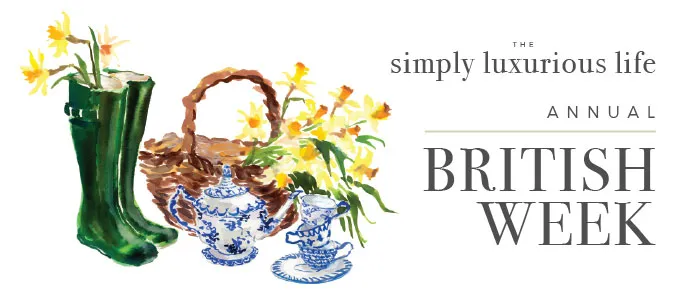Become a Member for as little as $4/mo and enjoy unlimited reading of TSLL blog.
“The two words information and communication are often used interchangeably, but they signify quite different things. Information is giving out; communication is getting through.” – Sydney Harris
The Simple Sophisticate, episode #34
As someone who is thankful for the ability to email, as it gives me time to think about what I want to say, say it thoughtfully and in my own time, there are also many frustrations that come with this method of communication. Did they receive it or did it get lost in the junk folder? Was my tone interpreted correctly or did I offend them? Why haven’t they responded? Will they ever respond?
Many of these questions can be solved by simply talking in person, but as we know that is not always available to us due to distance, time and out of respect for the recipient’s time as well. However, many of these headaches can be eliminated with a few simple etiquette guides. Even though not everyone follows these rules, more and more people are learning and discovering how they can eliminate unnecessary angst or stress.
Last month, the three part Life & Tech series began as Mastering Our Cell Phones was discussed. This month the preferred method of professional communication will be discussed in detail. (Next month texting will be covered.)
From when to respond or if you should respond, I’ll break down what is and isn’t a good idea based on the relationship you are trying to establish with the recipient.
1. Add a Clear Subject Line
Out of respect for the recipient and their time, be clear about the subject of your email. Keep it succinct, but informative.
2. Select a Professional/Grown-up Email Address
One of the first items of business for our high school students as they begin to apply for scholarships and college entrance is to update their email address. As we know while we may not like it, first impressions indeed count, so paying attention to a simple detail is a good idea.
On a similar note, make sure the name that is attached to the email account is clear. Make sure it pops us as “Shannon Ables”, not something ambitious or robotic.
3. Double Check the Recipient
We have all heard horror stories about the wrong email ending up in the wrong inbox. One piece of advice is to write the email content before addressing it to anyone. Upon completion, then add the recipient’s address.
4. Refrain from Reply All
Another no-no often learned the hard way, but more importantly about of respect to others who have an already full inbox. If anyone on the “Reply All” list doesn’t need to see the email, delete their address. They will thank you (even though they don’t know they were spared) as you’ve saved them time by not wasting it on something they will delete anyway.
5. Step Away from the ALL CAPS Key
Most of us have learned this, but still some either didn’t get the memo or like to talk very loud even via email. If you want to emphasis a point, italics works just as effectively.
6. Choose and Use Paragraphs
Just as bloggers are learning this trick, readers need a place to focus and can easily get lost in a long, lengthy paragraph that drones on. Break up a long email with clear paragraph breaks. Again, this focuses the attention of the reader and helps understand what you want them walk away from the email knowing and/or doing for them.
7. Keep it Brief
If you have to write a length email, follow #6, otherwise, get to the point. Your recipient will thank you.
8. Include a Courteous Greeting and Salutation
On the initial exchange of emails, always make sure to include a warm hello such as “Good morning” or inquiring about their day or an event you know they were involved in. And be sure to bookend your email just as you would a letter. The younger generation either has been taught this as they don’t write letters or doesn’t understand the simple power of the courtesy to end on a respectful tone, but trust me, it won’t hurt to simply say “Sincerely,” or “All my best,”.
After the initial exchange, if the emails are going quickly back and forth, greetings and salutations may fall away, but that depends on your relationship with the recipient.d
9. Limit Exclamation Points
As in writing any effective prose, it is the diction, not the punctuation that will convey the appropriate mood and tone of the email. Save exclamation points for dialog and internal jokes that the recipient indeed will understand.
10. Be Conscious of Your Tone (limit or eliminate humor)
Speaking of tone, I have the opportunity to work with someone who is gifted when it comes to conveying humor in an email. Part of why I always interpret the tone (sarcastic, self-effacing, etc) correctly, is that I’ve had many conversations with her in person. Such can’t be said for most people when it comes to writing humorous, tongue-in-cheek emails.
It is especially important that we write clearly, respectfully and in a straightforward manner to people we work with or people who we don’t know. And always re-read emails to check the tone. Does it convey confidence or insecurity? Does it sound appreciative or whiny? We all have most likely made mistakes in this arena, but the power of a good email is being able to establish an effective tone. If you can do that, you will be able to move mountains with your keystrokes.
11. Use Bcc Selectively
The Bcc option is a handy selection to include people who don’t need to respond, need to be privy to the conversation, but also need to remain private (or their email addresses do). Don’t be afraid to use it, but don’t abuse it by sharing information with others that should remain private between the two parties engaged in the focal conversation.
12. Indicate Receipt of Important Information
“The single biggest problem in communication is the illusion that it has taken place.” – George Bernard Shaw
Even if you respond with a simple “Thank you”, responding to an email that contains information that the sender will want to know if it wasn’t/was received is a professional, respectful habit to adhere to. For example, if you are setting a date, place or time to meet, letting them know that decision works for you should undoubtedly be conveyed. If documents are sent as attachments that were requested, indicate that they’ve arrived.
Often offices or businesses have an automated response which would work well also. Depending upon your inbox, determine which would be the best way to approach this aspect of communication.
And when in doubt, always respond with “Thank You” to indicate that receipt, but also, and most importantly, appreciation.
13. Proofread
It goes without saying, and even after I write it, I know I will have typos to endure in my future, but do your best to proofread. Often the recipient is gracious when they see an error as they have most likely made the mistake themselves, but proper spelling and punctuation sends a strong message, and lack thereof can intonate lack of time, respect or education, so type carefully.
14. A Thought About Forwarding
Thankfully many forwards that in the past were considered spam has been reduced by friends and family members (as we now have Facebook, Pinterest and Twitter), but the key use for forwarding is to send someone information that they need without you having to retype it. As always be considerate of the recipient’s time and determine whether or not they really need this information.
15. Understand Cultural Differences
If you communicate with recipients of another culture that has different expectations when it comes to getting to know each other and sharing personal information, be sure to become privy with these customs before offending them unnecessarily.
As email becomes a more common way to communicate at work and between family and friends aside from our cell phones, how we write can either build or destroy relationships. While I have attempted to cover aspects that I have dealt with and deal with in my own experience, I would love to hear from you and discover what rules or etiquette you have found to be helpful as you effectively communicate online as well. Please do share in the comments.
Click here for the third and final part of the Life & Tech series: Texting etiquette 101.
Petit Plaisir:
~iPhone 6 (6 Plus, also) Verus (Kickstand Feature) Wallet Case
A few years ago when I had my Apple iPhone 4, I shared on the blog that I didn’t care what my case looked like, I wanted it to have a kickstand. Well, that resulted in a not so great looking case. With my latest upgrade to my iPhone 6, I vowed to consider aesthetics as well as the necessity of a kickstand. And I found what I was looking for.
Available in many different colors, Verus leather wallet case is ideal for my lifestyle. I can keep two credit cards and a couple of business cards in the left flap, and the phone is securely snapped into the right side. The phone’s capability of turning into a kickstand to support itself is simple, and doesn’t include any odd contraptions that might snap or break off in the future. For under $22, it is a quality case, I highly recommend.





I am going to share this link with all my students, if they read this and follow these simple rules my life will vastly improve!!
Accidental Icon
http://www.accidentalicon.com
So glad you did this podcast! One thing that drives me bonkers is when people’s formalities actually make them sound condescending. A guy I work with, for example: he uses super long, fancy, formal words that no one ever uses. He is highly educated and he wants you to know it. Everyone else at our office is highly educated as well, but we use professional, everyday language in our emails. He could use simpler, more direct language and still get the message across without making himself look like a jerk. He also begins all (using all CAPS for emphasis here because I can’t do italics on this device), ALL of his emails with “Thank you for your time and attention to this matter.” At the beginning. Before you’ve even read the email. How can he “thank” you for your time and attention if he doesn’t even know that you’ve read the entire email? I’ve made several subtle hints that a phrase like that goes at the END of the email, as you will need some sort of polite closing remark at the end anyway. He doesn’t get it.